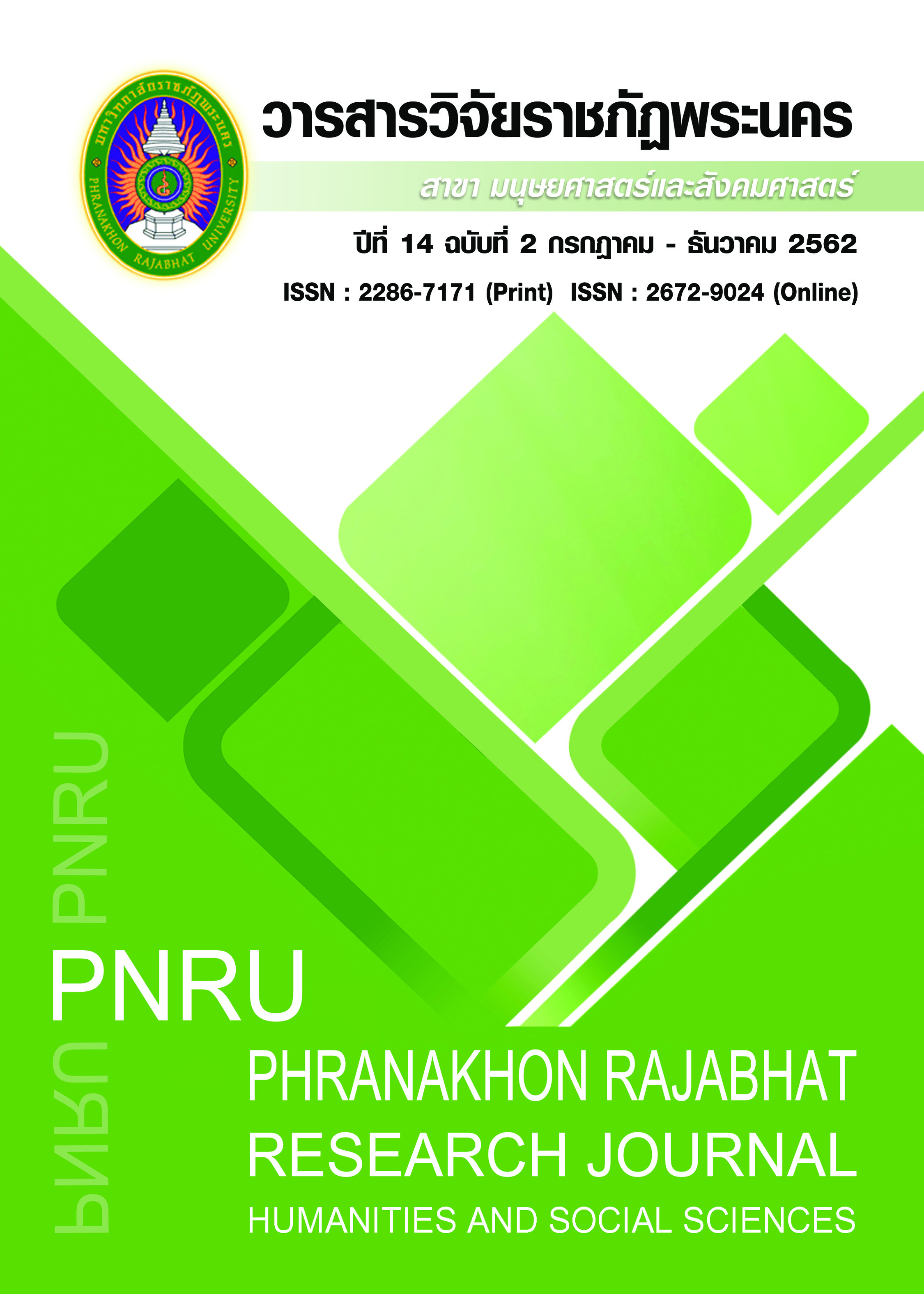BRAND ENGAGEMENT STRATEGYWITH SERVICE OF AGING SOCIETIES
Main Article Content
Abstract
This article can be applied to determine branding engagement strategy for aging socoeties. The 1st stage is to create brand trustworthiness via marketing communications indicate that products and services of this business can support the better living, response to the needs of the elderly and the actual result of this service. The 2nd stage is to create honesty and sincerity by showing that companies are working with sincerity, fair and able to solve problems for all elderly customers. The 3rd stage is to create pride towards business by adapting the products and services that match with customer’s needs and the 4th stage is to create brand engagement by communicated directly to including create special activities only for them. Especially, the direct message via post or e-mail is one of the most important tools that makes the aging societies feel special bonding and create brand engagement between brand and customer.
Article Details
Each publish articles were copyright by Phranakorn Rajabhat University
Any contents which appeared in each articles in the journal were authors personal opinion. It did not relate to Phranakorn Rajabhat University and other instructors in the university. Each authors would take responsibility on their articles. If there are any mistake, the authors will take responsibility themselves
References
Chon Buri. Journal of Management Science Chiangrai Rajabhat University, 11(1), 110 – 130. (in Thai)
Doorn, V.J., Lemon, K. N., Mittal, V. et al. (2010). Customer engagement behavior: theoretical foundations and research directions. Journal of Service Research,13, 253-266.
Export-Import Bank of Thailand. (2014). Gleaning from abroad elderly society with waiting business opportunities. Retrieved May 5, 2017, from http://www.exim.go.th/ doc/newsCenter/44587.pdf. (in Thai)
Gallup Brand Marriage. (2004). Understanding employee engagement. Retrieved October 20, 2018, from http://www.frequentyasked.info/articles/?q=node/88. 2003.
Intha, J. (2008). Retirement security issues for private employees. Thesis of Master of Laws Program, Faculty of Law Ramkhamhaeng University.
Kaewmala, S. (2014). Comparison of brand equity between: “Toyota” and “Chevrolet” Brands. Retrieved October 20, 2018, from https://gsbooks.gs.kku.ac.th/57/grc15/ files/hmo61.pdf. (in Thai)
Kotler, P. (1999). Marketing management: an Asian perspective 2nd edition. NJ: Prentice Hall.
McEwen, W. J. (2005). Married to the brand: Why consumers bond with some brands for life. NY: Gallup Press.
Morgan, R.M. & Hunt, S.D. (1994). The commitment - trust theory of relationship marketing. Journal of. Marketing, 58 (July), 20-30.
Niyomsart, S. (2015). Brand love, brand loyalty, and word of mouth: a case of AIRASIA. An Independent Study of Master of Business Administration in Marketing, Faculty of Management Science Khon Kaen University. (in Thai)
Phipatseritham, K. (2014). With love and commitment. Retrieved May 5, 2017, from http:// marketeer.co.th/archives/5217. (in Thai)
Ponsrilert, P. (n.d.). Marketing opportunities of aging-related businesses. Retrieved May 5, 2017, from https://phongzahrun.wordpress.com (in Thai)
Puriwat, W. (2012). Customer engagement. Retrieved May 5, 2017, from http://library. acc.chula.ac.th/PageController.php?page=FindInformation/ArticleACC/2555/ Wilert/BangkokBiznews/B0502121. (in Thai)
Schaufeli, W. B., Salanova, M., Gonzalez-Roma, V. & Bakker, A. B. (2002). The measurement of engagement and burnout: a two-sample confirmatory factor analytic approach. Journal of happiness studies, 3, 71-92.
Siam Commercial Bank. (2013). How to create a brand to Fashionable 4.0? Retrieved May 5, 2017, from https://scbsme.scb.co.th/seminar-detail/83. (in Thai)
Siam Commercial Bank. (2013). The elderly services business ... with the opportunity of Thai entrepreneurs. Retrieved May 5, 2017, from https://www.scbeic.com/th/detail/ product/556. (in Thai)
Siripunrob, K. (1999). Branding. Bangkok: Thammasat University Research and Consultancy Institute. (in Thai)
Stern D. I. (1997). Interpreting ecological economics in the neoclassical paradigm: limits to substitution and irreversibility in production and consumption. Ecological Economics 21, 197-215.
Subpakorn, R. (2017). Brand and relationship. Retrieved May 5, 2017, from http:// marketingmmr.blogspot.com/2015/06/blog-post_75.html. (in Thai)
Sukhothai Thammathirat Open University. (2015). Elderly society: implications for economic development. Retrieved October 20, 2018, from http://www.stou.ac.th/ stouonline/lom/data/sec/Lom12/05-01.html. (in Thai)
Thiangtam, S. (2010). Ingredient Branding. Productivity world, 15(86), 43 – 48. (in Thai)
Vivek, S. D. (2009). A scale of consumer engagement. A dissertation of Tuscaloosa, Alabama.

